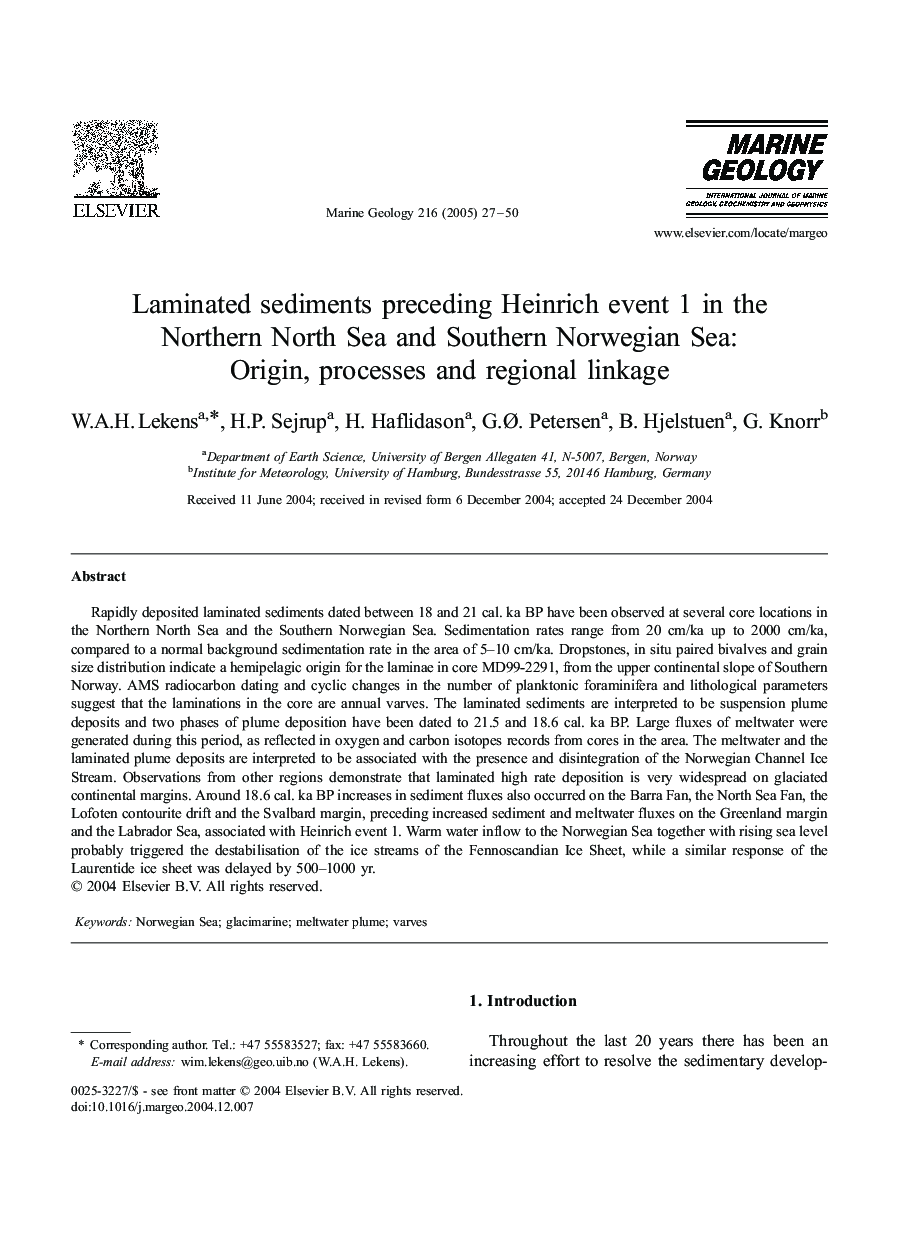| Article ID | Journal | Published Year | Pages | File Type |
|---|---|---|---|---|
| 9532552 | Marine Geology | 2005 | 24 Pages |
Abstract
Rapidly deposited laminated sediments dated between 18 and 21 cal. ka BP have been observed at several core locations in the Northern North Sea and the Southern Norwegian Sea. Sedimentation rates range from 20 cm/ka up to 2000 cm/ka, compared to a normal background sedimentation rate in the area of 5-10 cm/ka. Dropstones, in situ paired bivalves and grain size distribution indicate a hemipelagic origin for the laminae in core MD99-2291, from the upper continental slope of Southern Norway. AMS radiocarbon dating and cyclic changes in the number of planktonic foraminifera and lithological parameters suggest that the laminations in the core are annual varves. The laminated sediments are interpreted to be suspension plume deposits and two phases of plume deposition have been dated to 21.5 and 18.6 cal. ka BP. Large fluxes of meltwater were generated during this period, as reflected in oxygen and carbon isotopes records from cores in the area. The meltwater and the laminated plume deposits are interpreted to be associated with the presence and disintegration of the Norwegian Channel Ice Stream. Observations from other regions demonstrate that laminated high rate deposition is very widespread on glaciated continental margins. Around 18.6 cal. ka BP increases in sediment fluxes also occurred on the Barra Fan, the North Sea Fan, the Lofoten contourite drift and the Svalbard margin, preceding increased sediment and meltwater fluxes on the Greenland margin and the Labrador Sea, associated with Heinrich event 1. Warm water inflow to the Norwegian Sea together with rising sea level probably triggered the destabilisation of the ice streams of the Fennoscandian Ice Sheet, while a similar response of the Laurentide ice sheet was delayed by 500-1000 yr.
Keywords
Related Topics
Physical Sciences and Engineering
Earth and Planetary Sciences
Geochemistry and Petrology
Authors
W.A.H. Lekens, H.P. Sejrup, H. Haflidason, G.Ã. Petersen, B. Hjelstuen, G. Knorr,
